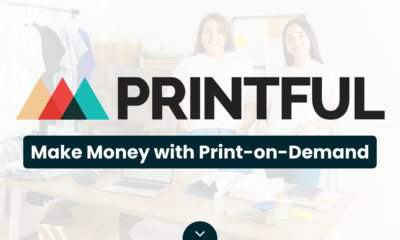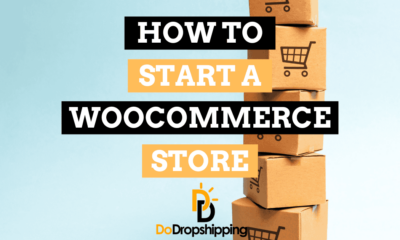MARKETING
Why we care about advertising: A marketer’s guide

With digital transformation, advertising isn’t just about growing brand awareness or planting a seed. Advertisers and their adtech partners can reach audiences big and small at any stage of the funnel, delivering cross-channel ads across multiple touchpoints. And they aren’t just using traditional demographics and ratings, they’re leveraging device-level or user-specific data, as well as contextual insights, to serve the right message to the right customer at the right time.
Advertising is deeply impacted by emerging tech platforms and social media trends, making it susceptible to constant disruptions. As marketers, you have to stay on top of your game by keeping up to date with industry trends.
As consumers have shifted their attention from traditional advertising to digital channels, it has become crucial for marketers to pivot. When this is studied within the context of an annual increase of 10.3% in the overall marketing budget and a 16.2% increase in digital marketing spending, we can see a trend of increasing reliance on digital advertising channels over traditional advertising options.
This data highlights the ever-evolving nature of advertising and underscores the importance of adopting relevant marketing strategies. It is only by understanding how customer preferences change over time that you can devise an effective advertising campaign.
This article covers the following key points:
Estimated reading time: 7 minutes
What are the best advertising practices?
The best advertising tactics are contextual and continue to evolve. Here are some guiding principles that can help with your advertising strategy.
Be adaptive. As marketers, you have to be able to keep up with the shifting landscape. After identifying what platforms drive the most traffic and are the most popular with your target group, you have to quickly learn and adapt to the platform’s features and algorithms. For example, TikTok’s popularity has grown exponentially; it had 1.2 billion monthly active users in Q4, 2021, up from 381 million in 2019. Additionally, the platform has repeatedly proven itself as a strong conversion channel, driving 155% more clicks than Instagram and Facebook ads for a Jungle Topp Media experiment.
Incorporate feedback. Your advertising methodology needs to have a built-in feedback loop to collect crucial performance data and incorporate it into your ongoing campaign. Create new content, release it, track metrics, collect feedback, and use it to design future campaigns. One of the biggest benefits of non-traditional marketing tools, such as social media, is that they generate actionable data that reveal insights. This makes assessing the impact of your campaigns easier than ever before.
For example, Instagram offers engagement insights for Reels and live broadcasts. For Reels, Instagram provides data on total plays, accounts reached, likes, comments, saves and shares. For live broadcasts, there is data on accounts reached, peak concurrent viewers, comments and shares. This is extremely valuable feedback that captures your current content’s effectiveness and engagement level, allowing you to tweak your future content accordingly.
Consider employing outside help. The best advertising practices are efficient. However, you have to be aware of the capacity of your business to use these tools effectively. Do you have the right team to produce content on emerging platforms? Does your team understand data and analytics? Using external vendors to optimize your advertising can give your business a competitive edge.
The most significant advantage of effective advertising is that it engages your audience. An engaged audience is more likely to purchase your products and refer your brand to other people through word of mouth. Specifically, advertising leads to audience development, and these are the benefits it offers:
- Customer acquisition: A burgeoning customer base is vital for your long-term revenue growth. To access new customer segments and markets, it is vital to make your brand visible and relatable. Advertising is that mechanism that fills the gap between your brand and potential customers.
- Customer retention: Since customer acquisition cost is often cited to be 5x the cost of customer retention, it is wise to increase your focus on building customer loyalty. Understanding customer feedback and implementing that into your campaign is essential for long-term relationship development.

Changes in the advertising landscape today
While the changing landscape driven by the amalgamation of tech and advertising is sure to bring multiple opportunities to marketers, it also imposes certain restrictions. Navigating this space can be challenging for the following reasons.
Standing out from the clutter. Advertising is omnipresent on the web today. Whether a customer is browsing on Google, reading an article, or watching a video on YouTube, they will see promotions and ads everywhere.
The sheer volume of advertising has made people increasingly numb to conventional digital advertising techniques. Marketers using digital advertising face more pressure than ever to stand out from the clutter and produce engaging content.


The decline of third-party cookies. Marketers have counted on third-party cookies for decades to track website visitors and collect consumer data online. This data is critical to improving user experience and generating targeted ads. However, data protection and privacy issues have now come to the forefront, bringing increased scrutiny to companies’ data practices and giving rise to regulatory frameworks to curb privacy violations.
Apple has implemented changes to its iOS14 operating system using Intelligent Tracking Prevention (ITP). Firefox also offers Enhanced Tracking Protection that blocks third-party cookies by default. Google controls over 63% of the browser market and plans to phase out third-party cookies by 2023. Marketers will no longer be able to rely on these cookies to generate consumer-level data, which will hamper their ability to create targeted ads.
Adapting to industry changes
The message is clear – advertising, in the years to come, can’t be based on privacy breaches or manipulative tactics. Instead, successful advertisers will have to produce transparent, ethical ads that speak to consumers authentically.
Know your audience. Different tech platforms and social media channels cater to different audiences. As a marketer, you need to understand which platforms are most widely used by your customers and make your ads compatible with the platform you’re using to advertise. Unwanted ads drive 84% of consumers away from the platform, with approximately 40% of baby boomers paying for premium subscriptions to avoid them.
Platforms like TikTok and tools like Instagram Reels have incorporated ads into the content itself. Unlike YouTube, TikTok and Instagram ads are not disconnected from the underlying video content; rather, they assimilate the ads into the content itself. This kind of organic and informal approach to advertising is a better way to engage consumers.
Contextual advertising. Unlike targeted advertising, contextual advertising does not rely on third-party cookies. It involves matching the content of a webpage with the content of your ad. This model is able to influence consumers’ purchase decisions by taking into account the interests that drew them to that webpage while respecting their privacy.
Applications of machine learning and natural language processing (NLP) in advertising have provided marketers with numerous opportunities. It is these capabilities that enable the “reading” of webpage content for effective contextual advertising. A recent study by GumGum, a contextual advertising company, and SPARK Neuro, a neuro analytics company, found that ads that match the underlying page’s content generate 43% more neural engagement and 2.2 times better ad recall. Contextual advertising can mitigate the impact of declining third-party cookies and provide a potent alternative for marketers.
Keys to successful advertising
The digital transformation of the advertising industry has provided multiple opportunities and challenges. While it is easier today than ever before to reach a larger audience through multiple platforms, growing content competition and rising privacy concerns have required marketers to be more creative.
At its core, successful advertising involves knowing your audience and identifying the most effective platform to deliver high-impact ads to your specific target group.
Resources for learning more about advertising
The advertising landscape is constantly changing, so brands need to develop new methods of audience engagement on a regular basis.
Here are some helpful advertising resources to help improve your strategies:
MARKETING
YouTube Ad Specs, Sizes, and Examples [2024 Update]
![YouTube Ad Specs, Sizes, and Examples [2024 Update] YouTube Ad Specs, Sizes, and Examples](https://articles.entireweb.com/wp-content/uploads/2024/06/YouTube-Ad-Specs-Sizes-and-Examples.jpg)
Introduction
With billions of users each month, YouTube is the world’s second largest search engine and top website for video content. This makes it a great place for advertising. To succeed, advertisers need to follow the correct YouTube ad specifications. These rules help your ad reach more viewers, increasing the chance of gaining new customers and boosting brand awareness.
Types of YouTube Ads
Video Ads
- Description: These play before, during, or after a YouTube video on computers or mobile devices.
- Types:
- In-stream ads: Can be skippable or non-skippable.
- Bumper ads: Non-skippable, short ads that play before, during, or after a video.
Display Ads
- Description: These appear in different spots on YouTube and usually use text or static images.
- Note: YouTube does not support display image ads directly on its app, but these can be targeted to YouTube.com through Google Display Network (GDN).
Companion Banners
- Description: Appears to the right of the YouTube player on desktop.
- Requirement: Must be purchased alongside In-stream ads, Bumper ads, or In-feed ads.
In-feed Ads
- Description: Resemble videos with images, headlines, and text. They link to a public or unlisted YouTube video.
Outstream Ads
- Description: Mobile-only video ads that play outside of YouTube, on websites and apps within the Google video partner network.
Masthead Ads
- Description: Premium, high-visibility banner ads displayed at the top of the YouTube homepage for both desktop and mobile users.
YouTube Ad Specs by Type
Skippable In-stream Video Ads
- Placement: Before, during, or after a YouTube video.
- Resolution:
- Horizontal: 1920 x 1080px
- Vertical: 1080 x 1920px
- Square: 1080 x 1080px
- Aspect Ratio:
- Horizontal: 16:9
- Vertical: 9:16
- Square: 1:1
- Length:
- Awareness: 15-20 seconds
- Consideration: 2-3 minutes
- Action: 15-20 seconds
Non-skippable In-stream Video Ads
- Description: Must be watched completely before the main video.
- Length: 15 seconds (or 20 seconds in certain markets).
- Resolution:
- Horizontal: 1920 x 1080px
- Vertical: 1080 x 1920px
- Square: 1080 x 1080px
- Aspect Ratio:
- Horizontal: 16:9
- Vertical: 9:16
- Square: 1:1
Bumper Ads
- Length: Maximum 6 seconds.
- File Format: MP4, Quicktime, AVI, ASF, Windows Media, or MPEG.
- Resolution:
- Horizontal: 640 x 360px
- Vertical: 480 x 360px
In-feed Ads
- Description: Show alongside YouTube content, like search results or the Home feed.
- Resolution:
- Horizontal: 1920 x 1080px
- Vertical: 1080 x 1920px
- Square: 1080 x 1080px
- Aspect Ratio:
- Horizontal: 16:9
- Square: 1:1
- Length:
- Awareness: 15-20 seconds
- Consideration: 2-3 minutes
- Headline/Description:
- Headline: Up to 2 lines, 40 characters per line
- Description: Up to 2 lines, 35 characters per line
Display Ads
- Description: Static images or animated media that appear on YouTube next to video suggestions, in search results, or on the homepage.
- Image Size: 300×60 pixels.
- File Type: GIF, JPG, PNG.
- File Size: Max 150KB.
- Max Animation Length: 30 seconds.
Outstream Ads
- Description: Mobile-only video ads that appear on websites and apps within the Google video partner network, not on YouTube itself.
- Logo Specs:
- Square: 1:1 (200 x 200px).
- File Type: JPG, GIF, PNG.
- Max Size: 200KB.
Masthead Ads
- Description: High-visibility ads at the top of the YouTube homepage.
- Resolution: 1920 x 1080 or higher.
- File Type: JPG or PNG (without transparency).
Conclusion
YouTube offers a variety of ad formats to reach audiences effectively in 2024. Whether you want to build brand awareness, drive conversions, or target specific demographics, YouTube provides a dynamic platform for your advertising needs. Always follow Google’s advertising policies and the technical ad specs to ensure your ads perform their best. Ready to start using YouTube ads? Contact us today to get started!
MARKETING
Why We Are Always ‘Clicking to Buy’, According to Psychologists

Amazon pillows.
MARKETING
A deeper dive into data, personalization and Copilots

Salesforce launched a collection of new, generative AI-related products at Connections in Chicago this week. They included new Einstein Copilots for marketers and merchants and Einstein Personalization.
To better understand, not only the potential impact of the new products, but the evolving Salesforce architecture, we sat down with Bobby Jania, CMO, Marketing Cloud.
Dig deeper: Salesforce piles on the Einstein Copilots
Salesforce’s evolving architecture
It’s hard to deny that Salesforce likes coming up with new names for platforms and products (what happened to Customer 360?) and this can sometimes make the observer wonder if something is brand new, or old but with a brand new name. In particular, what exactly is Einstein 1 and how is it related to Salesforce Data Cloud?
“Data Cloud is built on the Einstein 1 platform,” Jania explained. “The Einstein 1 platform is our entire Salesforce platform and that includes products like Sales Cloud, Service Cloud — that it includes the original idea of Salesforce not just being in the cloud, but being multi-tenancy.”
Data Cloud — not an acquisition, of course — was built natively on that platform. It was the first product built on Hyperforce, Salesforce’s new cloud infrastructure architecture. “Since Data Cloud was on what we now call the Einstein 1 platform from Day One, it has always natively connected to, and been able to read anything in Sales Cloud, Service Cloud [and so on]. On top of that, we can now bring in, not only structured but unstructured data.”
That’s a significant progression from the position, several years ago, when Salesforce had stitched together a platform around various acquisitions (ExactTarget, for example) that didn’t necessarily talk to each other.
“At times, what we would do is have a kind of behind-the-scenes flow where data from one product could be moved into another product,” said Jania, “but in many of those cases the data would then be in both, whereas now the data is in Data Cloud. Tableau will run natively off Data Cloud; Commerce Cloud, Service Cloud, Marketing Cloud — they’re all going to the same operational customer profile.” They’re not copying the data from Data Cloud, Jania confirmed.
Another thing to know is tit’s possible for Salesforce customers to import their own datasets into Data Cloud. “We wanted to create a federated data model,” said Jania. “If you’re using Snowflake, for example, we more or less virtually sit on your data lake. The value we add is that we will look at all your data and help you form these operational customer profiles.”
Let’s learn more about Einstein Copilot
“Copilot means that I have an assistant with me in the tool where I need to be working that contextually knows what I am trying to do and helps me at every step of the process,” Jania said.
For marketers, this might begin with a campaign brief developed with Copilot’s assistance, the identification of an audience based on the brief, and then the development of email or other content. “What’s really cool is the idea of Einstein Studio where our customers will create actions [for Copilot] that we hadn’t even thought about.”
Here’s a key insight (back to nomenclature). We reported on Copilot for markets, Copilot for merchants, Copilot for shoppers. It turns out, however, that there is just one Copilot, Einstein Copilot, and these are use cases. “There’s just one Copilot, we just add these for a little clarity; we’re going to talk about marketing use cases, about shoppers’ use cases. These are actions for the marketing use cases we built out of the box; you can build your own.”
It’s surely going to take a little time for marketers to learn to work easily with Copilot. “There’s always time for adoption,” Jania agreed. “What is directly connected with this is, this is my ninth Connections and this one has the most hands-on training that I’ve seen since 2014 — and a lot of that is getting people using Data Cloud, using these tools rather than just being given a demo.”
What’s new about Einstein Personalization
Salesforce Einstein has been around since 2016 and many of the use cases seem to have involved personalization in various forms. What’s new?
“Einstein Personalization is a real-time decision engine and it’s going to choose next-best-action, next-best-offer. What is new is that it’s a service now that runs natively on top of Data Cloud.” A lot of real-time decision engines need their own set of data that might actually be a subset of data. “Einstein Personalization is going to look holistically at a customer and recommend a next-best-action that could be natively surfaced in Service Cloud, Sales Cloud or Marketing Cloud.”
Finally, trust
One feature of the presentations at Connections was the reassurance that, although public LLMs like ChatGPT could be selected for application to customer data, none of that data would be retained by the LLMs. Is this just a matter of written agreements? No, not just that, said Jania.
“In the Einstein Trust Layer, all of the data, when it connects to an LLM, runs through our gateway. If there was a prompt that had personally identifiable information — a credit card number, an email address — at a mimum, all that is stripped out. The LLMs do not store the output; we store the output for auditing back in Salesforce. Any output that comes back through our gateway is logged in our system; it runs through a toxicity model; and only at the end do we put PII data back into the answer. There are real pieces beyond a handshake that this data is safe.”
-

 SEARCHENGINES6 days ago
SEARCHENGINES6 days agoBillions Of Google goo.gl URLs To 404 In The Future
-
SEARCHENGINES5 days ago
Daily Search Forum Recap: July 22, 2024
-

 SEARCHENGINES7 days ago
SEARCHENGINES7 days agoGoogle Core Update Coming, Ranking Volatility, Bye Search Notes, AI Overviews, Ads & More
-

 SEO6 days ago
SEO6 days ago11 Copyscape Alternatives To Check Plagiarism
-

 SEO6 days ago
SEO6 days agoGoogle Warns Of Last Chance To Export Notes Search Data
-
SEARCHENGINES4 days ago
Daily Search Forum Recap: July 23, 2024
-

 AFFILIATE MARKETING6 days ago
AFFILIATE MARKETING6 days agoThe Top 5 AI Tools That Can Revolutionize Your Workflow and Boost Productivity
-

 SEO4 days ago
SEO4 days agoSystem Builders – How AI Changes The Work Of SEO









![YouTube Ad Specs, Sizes, and Examples [2024 Update] YouTube Ad Specs, Sizes, and Examples](https://articles.entireweb.com/wp-content/uploads/2024/06/YouTube-Ad-Specs-Sizes-and-Examples-400x240.jpg)
![YouTube Ad Specs, Sizes, and Examples [2024 Update] YouTube Ad Specs, Sizes, and Examples](https://articles.entireweb.com/wp-content/uploads/2024/06/YouTube-Ad-Specs-Sizes-and-Examples-80x80.jpg)






You must be logged in to post a comment Login